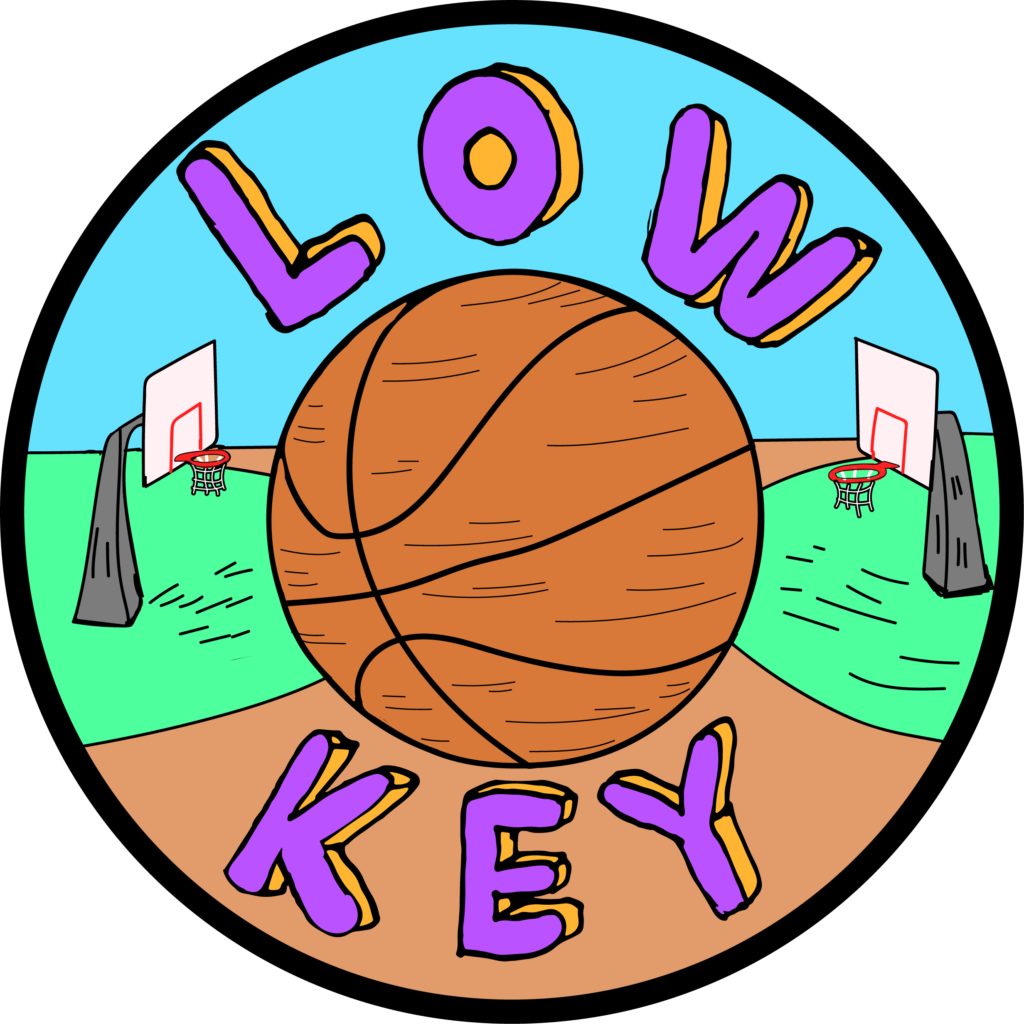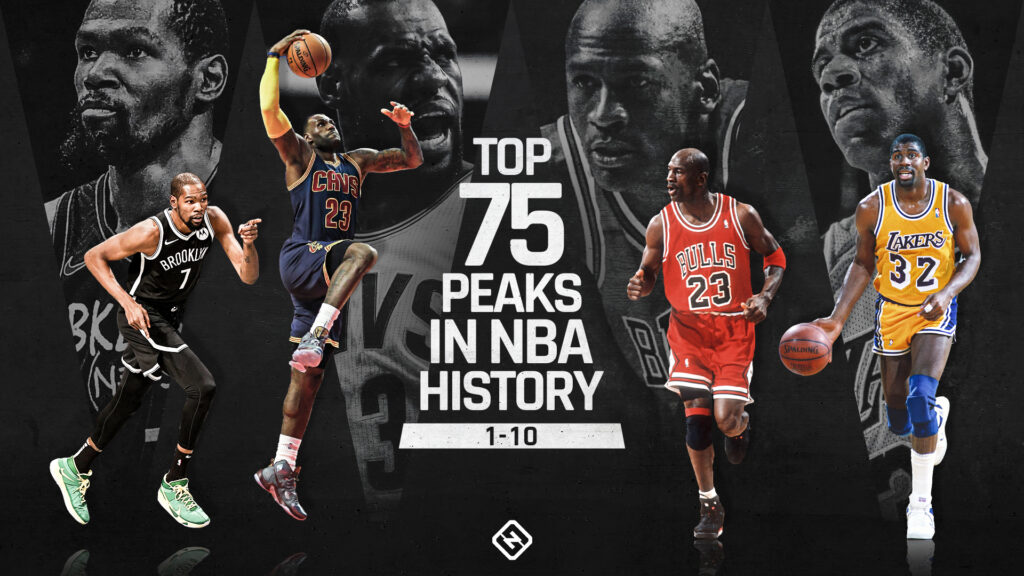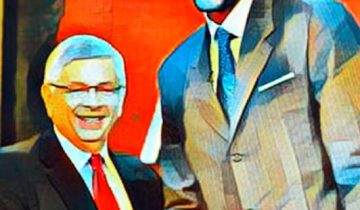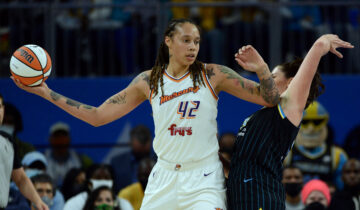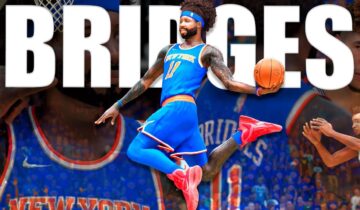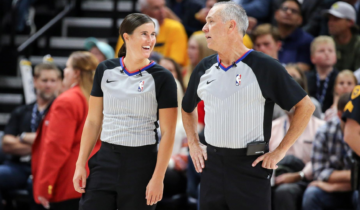Basketball has 5 positions, each with a corresponding position number from 1 to 5.
Most NBA fans do not claim to know it all. However, most of them know enough that they have earned their bragging rights. One thing is for sure, knowing the most important aspects of the game will play in your favor. As a hardcore fan, your knowledge will be challenged. Learning the moves, positions and actions of the players will be your first challenge. To help jumpstart your effort, a list of the NBA basketball positions are listed below.
Point Guard: #1
One of the most important positions in basketball, the point guard has many responsibilities. These responsibilities are getting the basketball from point A to B without a turnover. In the past, point guards rarely stepped out their roles to execute moves outside their range. Today, point guards will oftentimes enter key areas to secure a point.
Point guards must be intelligent on all levels. To be effective, they must be able to read the defense and make moves that secure points.
Shooting Guard (Off Guard): #2
Shooting guards do not require as much height as some of the other positions. In fact, most shooting guards are slightly shorter than their teammates. What is required of shooting guards is consistency. These players must be able to show consistency on the outside, near the basket and at midrange. They must also be able to achieve successful layups.
Shooting guards typically step in when the point guard is not in the position to handle the ball. For example, the point guard is held up by a defender, the shooting guard will step up and advance the ball up the court.
Small Forward: #3
Of all the positions, the small forward is the most diverse defensively and offensively. To hold the small forward position, the player must possess both offensive and defensive skills. They must be able to shoot inside and outside, as well as create shots for teammates.
Small forwards are very active on the court. So, they require a high level of athleticism, intellect and flexibility. They must also be a team player.
Power Forward: #4
Power forwards require height. In most cases, the power forward is the second tallest of all the players on the team. This position also requires intelligence, good decision-making skills and strength. Power forwards are usually positioned near the rim. While some power forwards stays in close proximity of the net, others will change their positions often, moving from near the rim to the three-point line.
Center: #5
In basketball, the center provides help defense when necessary, stays near the rim, receives short passes and scores off rebounds from offensive positions. The most important responsibility of the center is providing the passer angles that will earn points. Other responsibilities include rebounding the ball and defending the basket. While great shot-blocking skills are not required to be a center, taking up space and forcing the opponents to switch up their moves and shots is a necessity.
What are the Responsibilities and roles of each of the 1-5 position numbers in basketball?
This can vary depending on the position they play. Each position has a specific set of skills and attributes that are required to play the position effectively.
- Point guard: Point guards are typically the team’s primary ball-handler and playmaker. They are responsible for bringing the ball up the court, initiating the offense, and setting up their teammates for scoring opportunities. Think Chris Paul. They are also responsible for creating scoring opportunities for themselves and for being the team’s primary passer and facilitator. Point guards must have excellent ball-handling skills, quickness, and vision.
- Shooting guard: Shooting guards are typically the team’s primary perimeter scorer. They are responsible for scoring points and providing outside shooting. They also play a key role in the team’s perimeter defense, often guarding the opposing team’s best perimeter player. Shooting guards must have good shooting skills, quickness, and defensive skills. A bit like Klay Thompson, pre-injury.
- Small forward: Small forwards are typically responsible for scoring points, rebounding and playing defense. They are usually taller and more versatile than shooting guards but shorter than power forwards, they often play in the perimeter and inside the paint. They are also responsible for playing defense and for shutting down the opposing team’s perimeter players. Small forwards must have good scoring skills, rebounding skills, and defensive skills. Paul George comes to mind.
- Power forward: Power forwards are typically responsible for scoring points, rebounding and playing defense. They are usually taller and stronger than small forwards, they often play inside the paint. They are also responsible for playing defense and for shutting down the opposing team’s interior players. Power forwards must have good scoring skills, rebounding skills, and defensive skills. Bam Adebayo is the premier power forward in today’s NBA.
- Center: Centers are typically the tallest player on the team and are responsible for scoring points, rebounding and playing defense. They are usually the team’s primary interior defender and rebounder. They are also responsible for scoring points by playing close to the basket. Centers must have good scoring skills, rebounding skills, and defensive skills. Joel Embiid is the perfect modern day center.
It’s worth noting that in today’s game, those positions are not strict, players tend to have multiples skills and can play more than one position, that’s why you may see a point guard with a good scoring touch or a center that can shoot from long distance.
What are the height and size requirements for each position 1-5 in basketball in 2023?
This can definitely vary depending on the specific needs of the team, the coach’s strategy and the player’s skillset. However, there are general guidelines that are followed based on the typical size and attributes of players at each position.
- Point guard: Point guards are typically the shortest player on the team, with an average height between 5’9″ and 6’2″. This is because the position demands quickness, agility, and the ability to handle the ball, which are attributes that are more common in shorter players. However, there have been successful point guards who are shorter or taller than this range such as Isaiah Thomas, and Muggsy Bogues. Point guards must have excellent ball-handling skills, quickness, and vision. Nowadays we do have the 6’8 Luka Doncic who is way taller than most!
- Shooting guard: Shooting guards are usually taller than point guards but shorter than the forwards. They tend to have an average height between 6’0″ and 6’5″. This is because the position demands good shooting skills, quickness, and defensive skills. However, players taller than this range can also play this position, such as Michael Jordan and Kobe Bryant. However, MJ stood tall at 6’6, don’t forget.
- Small forward: Small forwards are usually taller and more versatile than shooting guards but shorter than power forwards. They tend to have an average height between 6’3″ and 6’8″. This is because the position demands good scoring skills, rebounding skills, and defensive skills. However, players taller than this range can also play this position, such as LeBron James and Larry Bird. Or Paul George.
- Power forward: Power forwards are usually taller and stronger than small forwards. They tend to have an average height between 6’7″ and 6’10”. This is because the position demands good scoring skills, rebounding skills, and defensive skills. However, players taller than this range can also play this position, such as Dirk Nowitzki, Kevin Garnett and Tim Duncan.
- Center: Centers are typically the tallest player on the team, with an average height between 6’9″ and 7’2″. This is because the position demands size, strength, and the ability to play close to the basket. However, there have been successful centers who are shorter or taller than this range such as Yao Ming, and Manute Bol. Centers need to have good scoring skills, rebounding skills, and defensive skills. Occasionally, we will see a strong but shorter center such as the 6’8 Bam Adebyao.
- The point guard is often considered the leader of the team and is responsible for bringing the ball up the court, setting up plays, and distributing the ball to other players.
- The shooting guard is typically a good shooter and scorer and is responsible for shooting from the perimeter and creating scoring opportunities.
- The small forward is a versatile player who is often responsible for defending multiple positions and contributing offensively by scoring and rebounding.
- The power forward is generally a strong, physical player who is responsible for rebounding, defending the post, and scoring in the paint.
- The center is typically the tallest player on the team and is responsible for protecting the paint, rebounding, and scoring in the post.
- Point guards are often smaller and quicker than other positions, and they rely on their ball-handling skills and court vision to be effective.
- Shooting guards are known for their shooting ability, and they often score a lot of points for their team.
- Small forwards are often the most athletic players on the team and are responsible for creating mismatches on offense and defense.
- Power forwards are typically strong and physical players who excel at rebounding and scoring in the paint.
- Centers are often the tallest players on the team and are responsible for protecting the rim and dominating the paint on both ends of the court.
